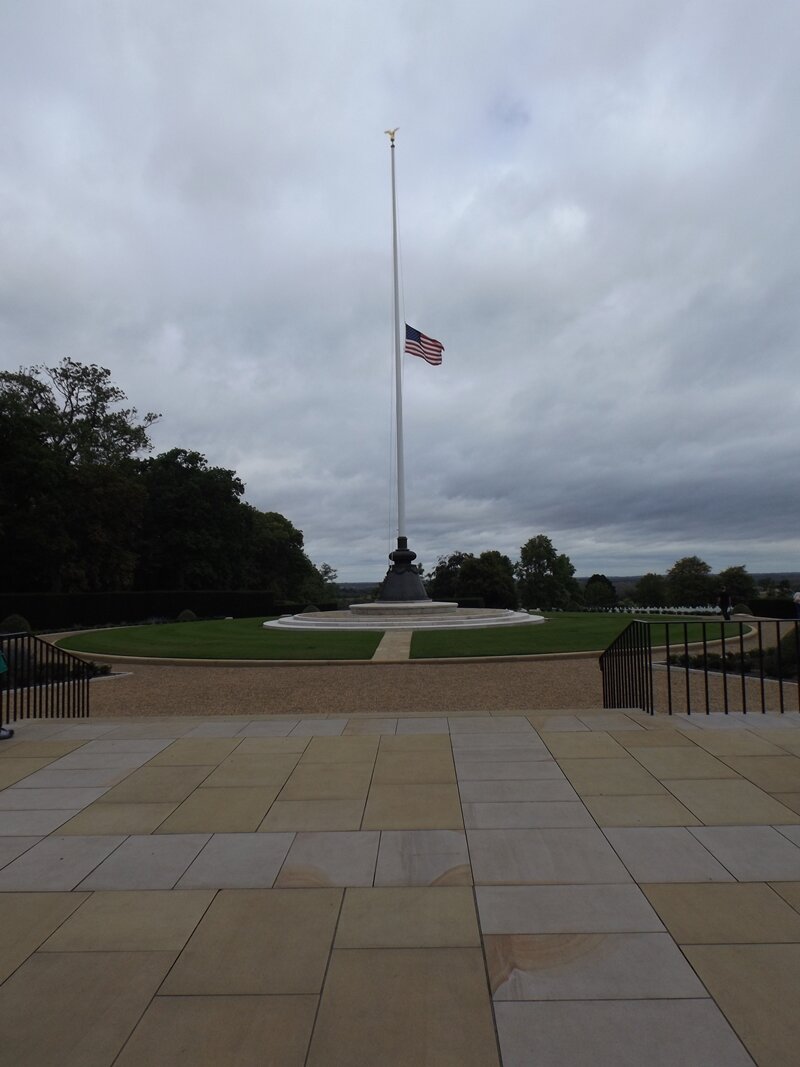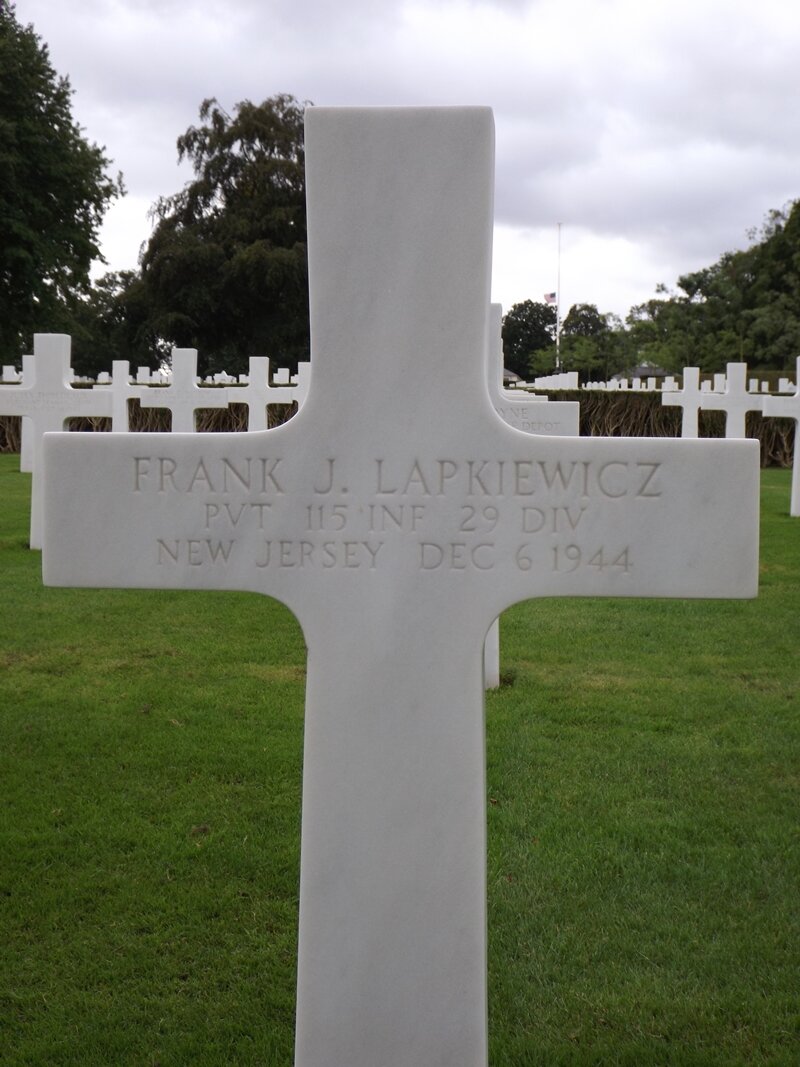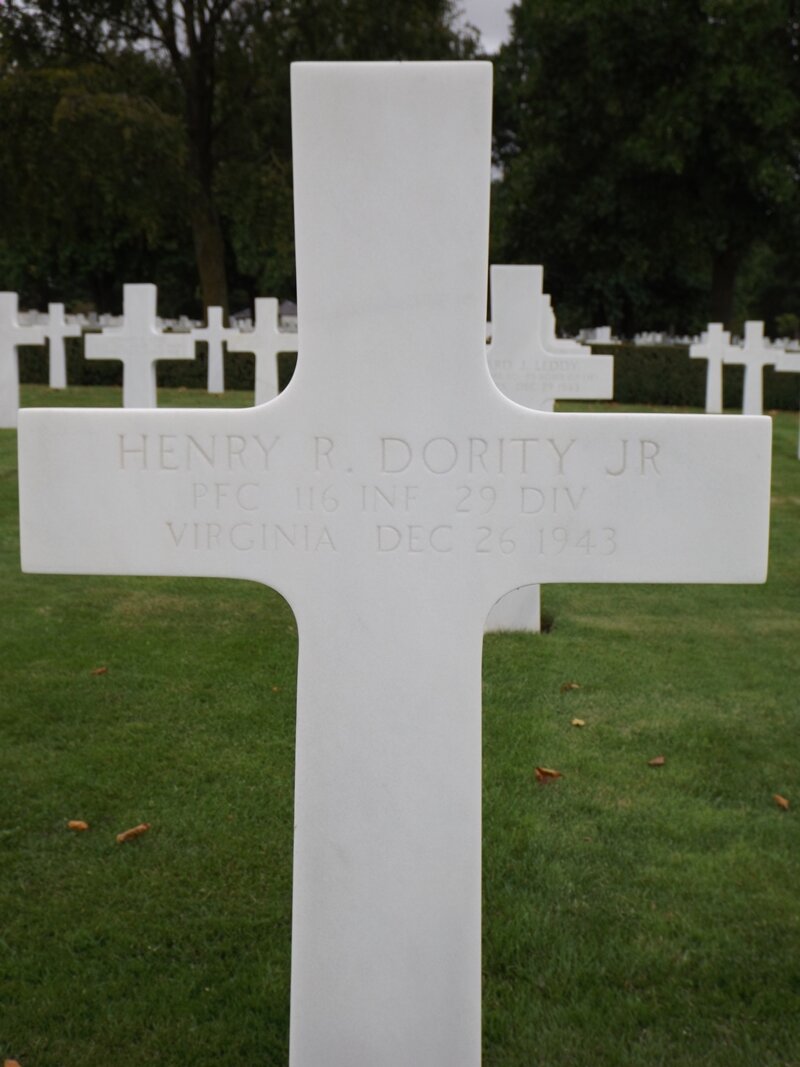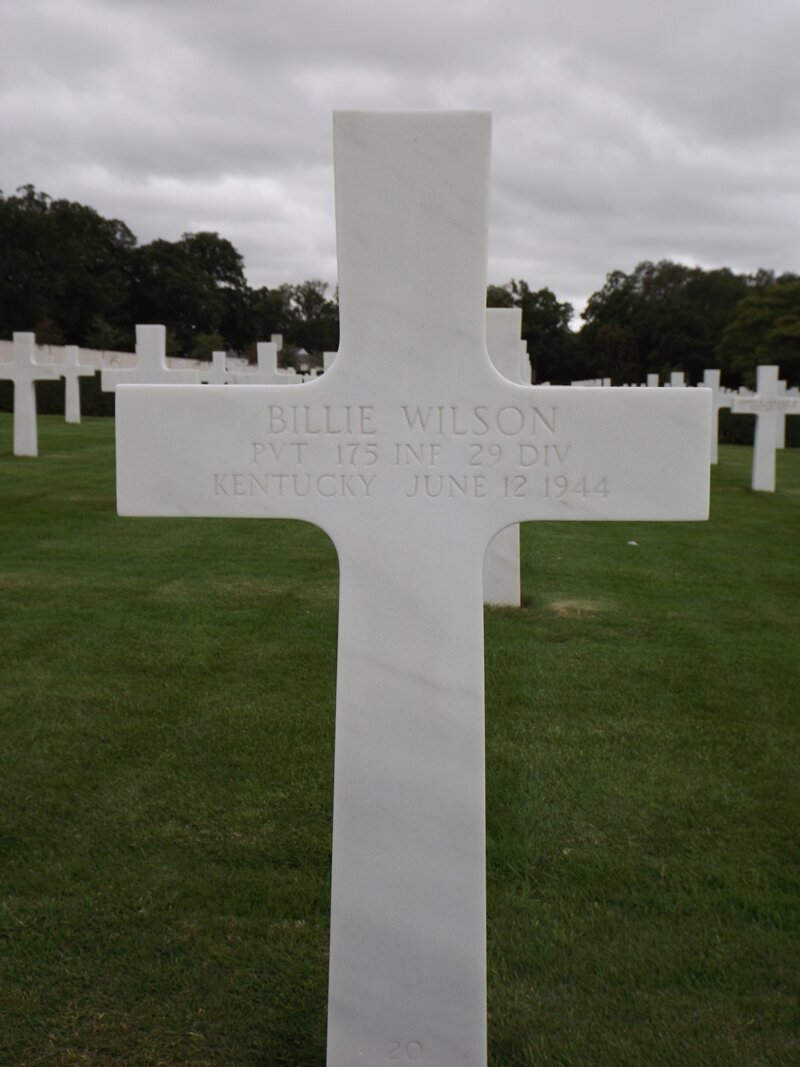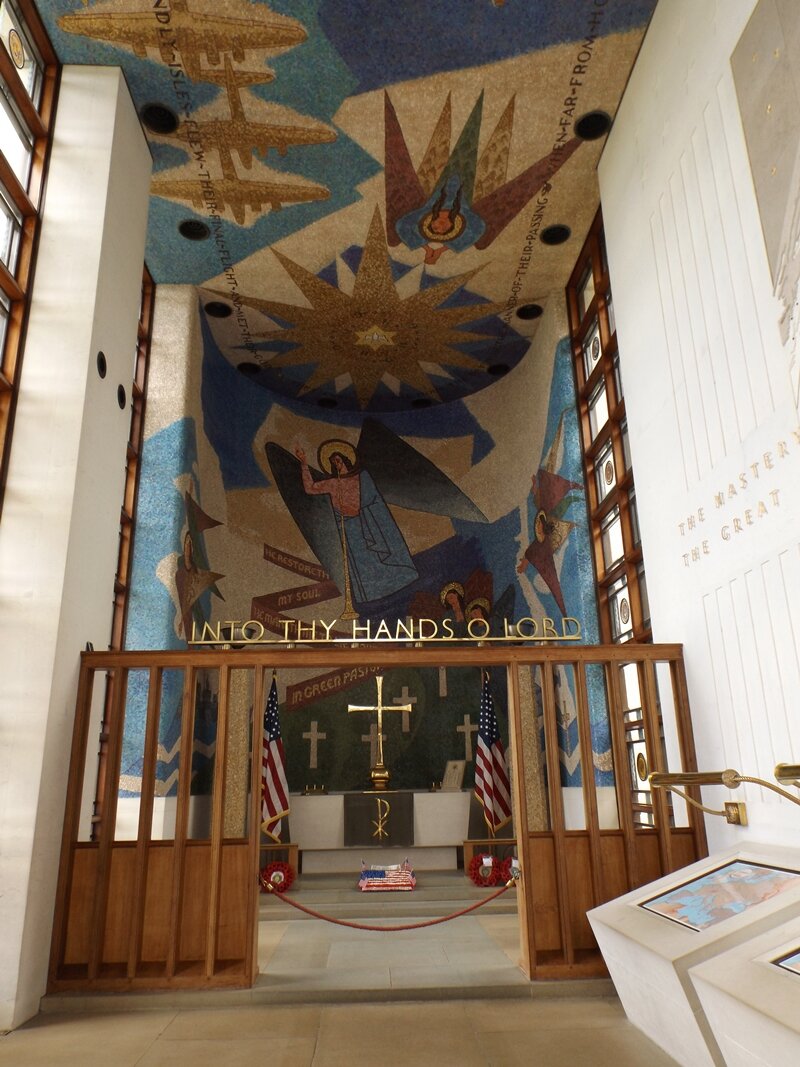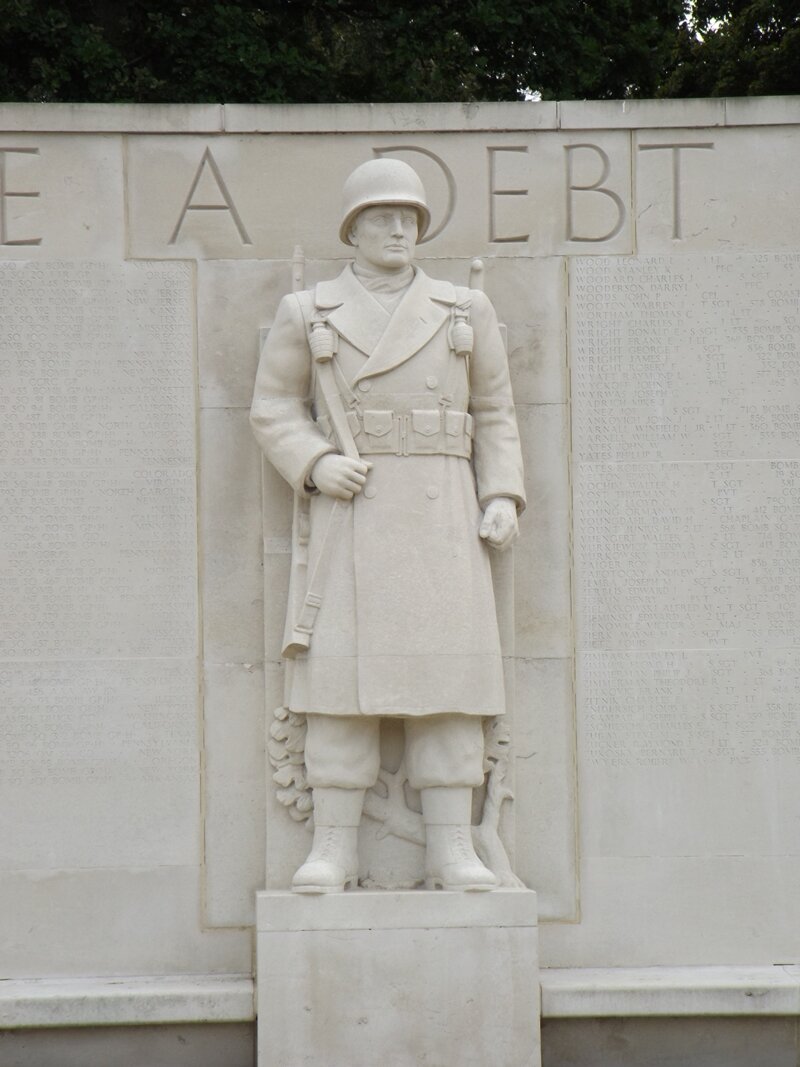
The Second World War resulted in the deaths of around 85 million people. Additionally, tens of millions more people were displaced. However, amid all the carnage people demonstrated remarkable courage, fortitude, compassion, mercy and sacrifice. We would like to honour and celebrate all of those people. In the War Years Blog, we examine the extraordinary experiences of individual service personnel. We also review military history books, events, and museums. And we look at the history of unique World War Two artefacts, medals, and anything else of interest.
Cambridge American Cemetery and Memorial
In this blog post, we visit the Cambridge American Cemetery and Memorial. The Cambridge American Cemetery and Memorial holds the graves of 3, 812 soldiers, sailors and airmen. Another 5, 127 souls are commemorated on the Tablets to the Missing. During a recent visit to the Cambridge American Cemetery and Memorial I came across the headstones of three members of the US 29th Infantry Division, and decided to investigate.
Known as the “Friendly Invasion”, 1.6 million American service personnel were stationed in the UK by 6 June 1944. Three months after D-Day, 1.2 million of those Americans had been committed to battle. Of course, Americans had been supporting Britain from the very start of the Second World War from the famous Eagle Squadrons to US Navy and Merchant Marine. The US Eighth Airforce bombed targets across Occupied Europe and Germany from August 1942 to May 1945. By the end of the conflict, over 3 million Americans had been sent to Britain. Regrettably, many ground, naval and air force personnel would never return home.
The American Battle Monuments Commission operates and maintains 26 American military cemeteries and 29 monuments across 16 countries. There are two American military cemeteries in the UK, situated in Cambridge and Surrey. The Cambridge American Cemetery and Memorial hold the graves of 3, 812 soldiers, sailors and airmen. Another 5, 127 souls are commemorated on the Tablets to the Missing.
During a recent visit to the Cambridge American Cemetery and Memorial, I came across three members of the US 29th Infantry Division. As an associate member of the 29th Division Association, I took photos of each headstone so that I could do a little research about these men. In the case of PFC. Henry R. Dority, Jr, 116th Infantry Regiment, 29th Infantry Division, it seems likely that he was killed in a training accident or succumbed to some sort of illness. The 116th Infantry Regiment had started amphibious assault training on the English coast by the date of this death, December 26th, 1943.
Henry R. Dority, Jr
YOB: 1920
Home: Halifax, VA
Occupation: Semi-Skilled Painter, Construction or Maintenance
Marital Status: Single with dependents
Enlisted: 3 February 1941
Service No: 20364712
Private First Class, 116th Infantry Regiment, 29th Infantry Division
DOD: 26 December 1943
Private Billie Wilson must have been badly wounded during the initial bitter fighting for the beachhead following the D-Day landings. Billie’s unit, Company L, 3rd Battalion, 175th Infantry, landed on Omaha Beach, Normandy, on 7 June 1944, D+1. Their landing was opposed. On 8 June, the 1st battalion passed through and captured La Cambe. However, the 2nd and 3rd Battalions were strafed by RAF Typhoon fighter-bombers with six men killed and 16 wounded. It is possible that Billie was wounded during the blue-on-blue attack by Allied planes. There was some opposition at the start of the push into Isigny. The operation did not start until dusk. Once again, it is possible that Billie was wounded and reported missing during the night advance on Isigny. The 3rd Battalion supported by tanks took Isigny only to find it abandoned by the Germans and set on fire by Allied bombing. We do know that Billie was seriously wounded, returned to the UK and subsequently died of his wounds on 12 June 1944. On 9 June, 175th pushed through Isigny and supported by tanks secured a bridge over the Vire River. The regiment then consolidated around Lison on the 9 and 10 June 1944.
Billie Wilson
YOB: 1923
Home: Kentucky
Occupation: General Farmer
Marital Status: Single
Enlisted: 1 June 1942
Service No: 15114820
Private, Company L, 3rd Battalion, 175th Infantry Regiment, 29th Infantry Division
Reported missing in action on 8 June; dropped rolls on 21 June
DOD: 12 June 1944
Awards: Purple Heart
Frank J. Lapkiewicz joined Company E, 115th Infantry Regiment on 4 September from the replacement depot as a Rifleman. On 16 September, Frank was listed as lightly injured in action (LIA) and moved to the hospital. In November 1944, the 29th Infantry Division began its drive to the Roer River, Germany, blasting its way through Siersdorf, Setterich, Durboslar, and Bettendorf, and reaching the Roer by the end of the month. Frank returned to duty on 14 November. The attack on Durboslar, preceded by an artillery barrage, started on 19 November. The 2nd Battalion, 115th Infantry advanced on the town supported by tanks and artillery. In response, the Germans brought up 12 self-propelled 88mm guns. Two Allied airstrikes helped to dislodge the German defenders. Small unit actions continued into the night and the 115th took a number of prisoners. At some point during the fighting on the 19, after just five days back in the line, Frank was seriously wounded. Frank was evacuated back to the UK but died of his wounds on 6 December 1944.
Frank J. Lapkiewicz
YOB: 1915
Home: 1111 Maple Street, Wilmington, Delaware
Parents: Leon & Nellie Lukiewska
Occupation: Skilled worker in manufacturing
Marital Status: Single
Enlisted: 28 February 1944
Service No: 42085191
Private, Company E, 2nd Battalion, 115th Infantry Regiment, 29th Infantry Division
Wounded during the battle for the German town of Durboslar
DOD: 6 December 1944 (Died of Wounds)
Awards: Purple Heart
In total, the Cambridge American Cemetery and Memorial contain the graves of around 45 members of the 29th Division’s three infantry regiments. The American Battle Monuments Commission keeps the cemetery in immaculate condition. The visitors centre and helpful staff ensure that the stories of service personnel such as Henry, Billie and Frank are preserved and their sacrifices remembered.


